TGF-β / Smad Signaling
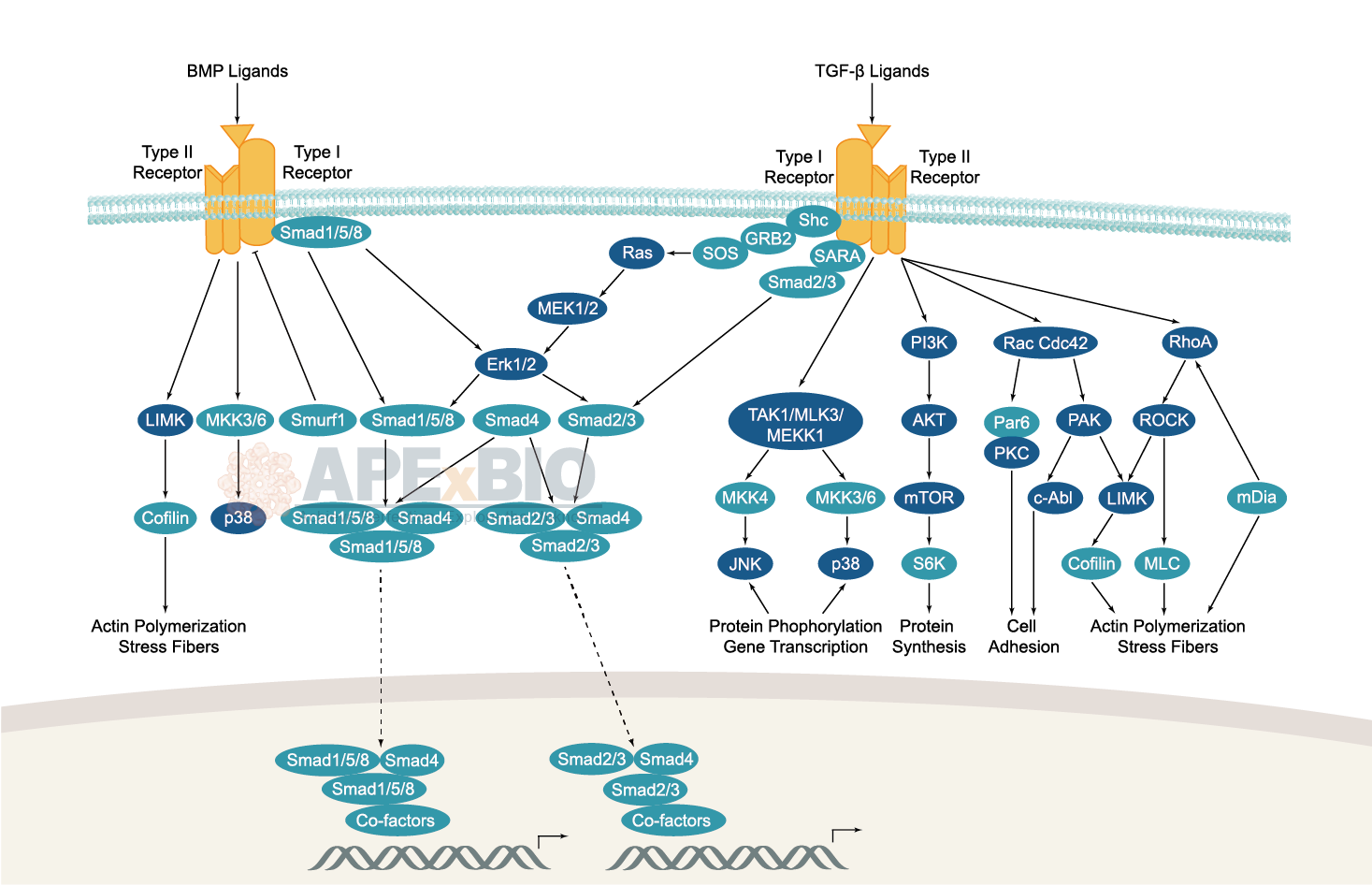
The TGF-β family is generally classified into two sub-families, TGF-β ligands, and bone morphogenic protein (BMP) ligands. In canonical signaling, receptor activation lead to phosphorylation of a group of transcription factors called Smads. TGF-β ligands bind to type II receptors (TGF-β II) which recruit and phosphorylate type I receptor (TGF-β I) on serine/threonine residues. The TGF-β I then recruits and phosphorylates a receptor regulated Smad (R-Smad). The R-Smad binds to the common Smad (Co-Smad) and forms a heterodimeric complex. This complex then translocates into the cell nucleus where it binds with nuclear co-factors to regulate the transcription of various target genes. Dysregulation of TGF-β/Smad signaling pathway is associated with a number of pathological conditions including fibrosis, cancer, immunodeficiency, diabetes and cardiovascular diseases etc.
-
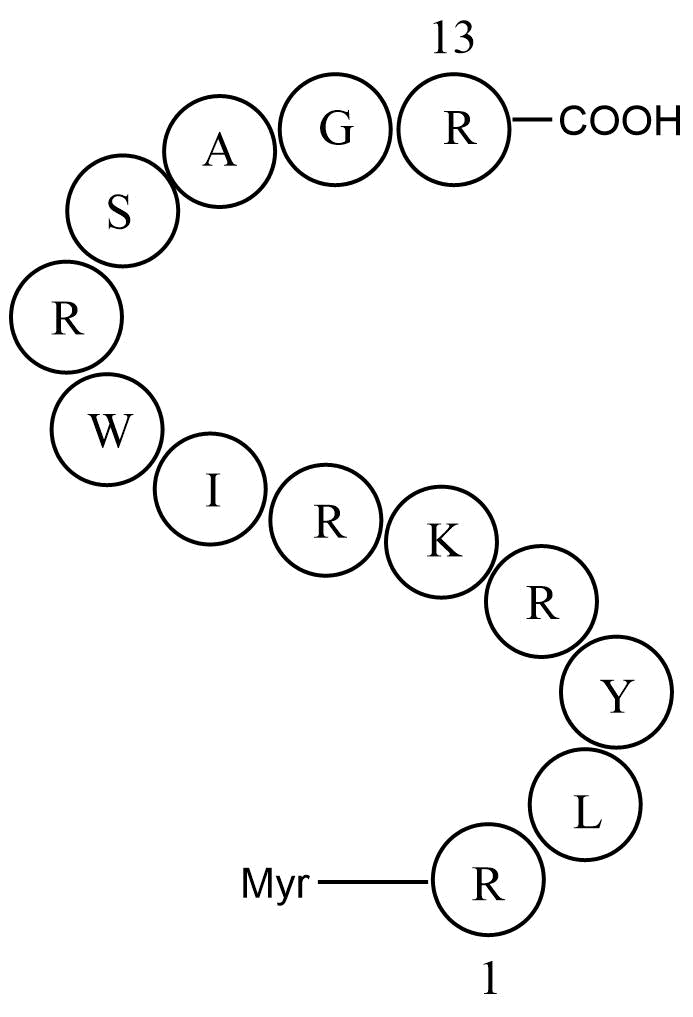 A8830 ZIP (SCRAMBLED)Summary: PKMζ inhibitor
A8830 ZIP (SCRAMBLED)Summary: PKMζ inhibitor -
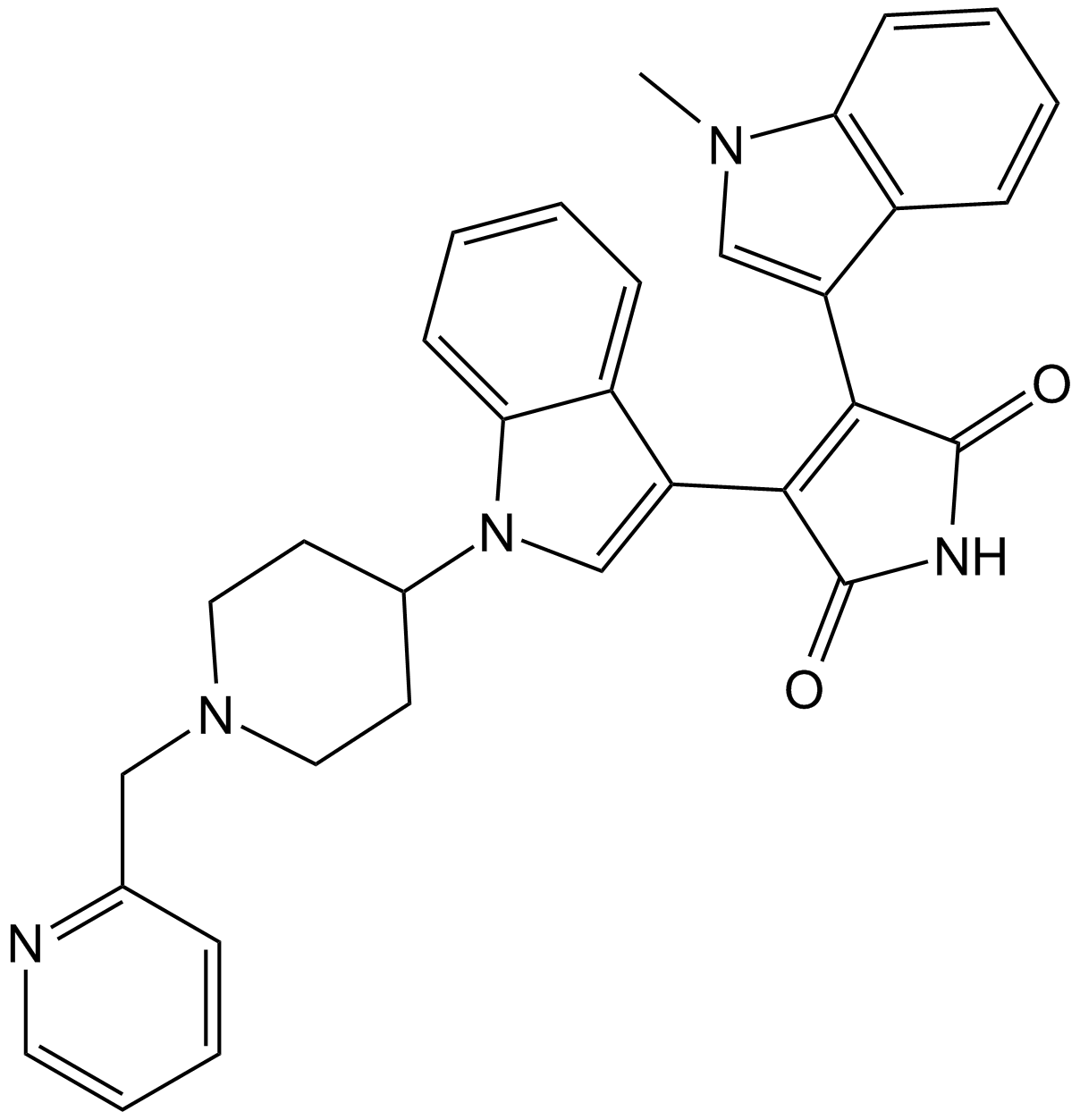 A1670 Enzastaurin (LY317615)2 CitationTarget: PKCSummary: PKC beta inhibitor,potent and selective
A1670 Enzastaurin (LY317615)2 CitationTarget: PKCSummary: PKC beta inhibitor,potent and selective -
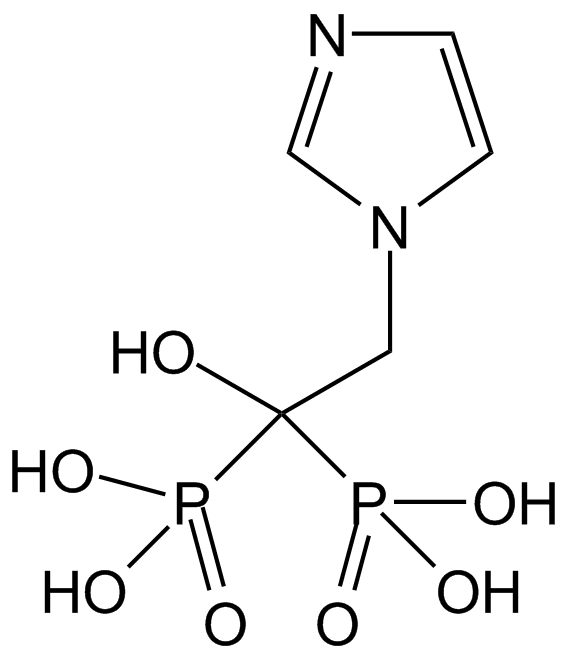 A1352 Zoledronic AcidTarget: Farnesyl Diphosphate SynthasesSummary: Potent nitrogen-containing bisphosphonates
A1352 Zoledronic AcidTarget: Farnesyl Diphosphate SynthasesSummary: Potent nitrogen-containing bisphosphonates -
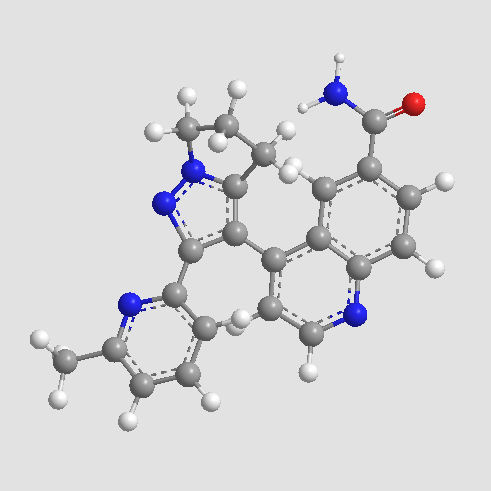 A8341 Go 6976Target: PKCSummary: PKCα/PKCβ1 inhibitor
A8341 Go 6976Target: PKCSummary: PKCα/PKCβ1 inhibitor -
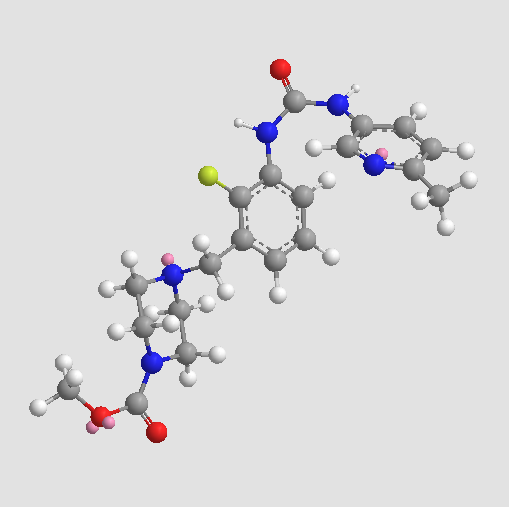 A8342 GF 109203X1 CitationTarget: PKCSummary: Protein kinase C,MLCK,PKG and PKA inhibitor
A8342 GF 109203X1 CitationTarget: PKCSummary: Protein kinase C,MLCK,PKG and PKA inhibitor -
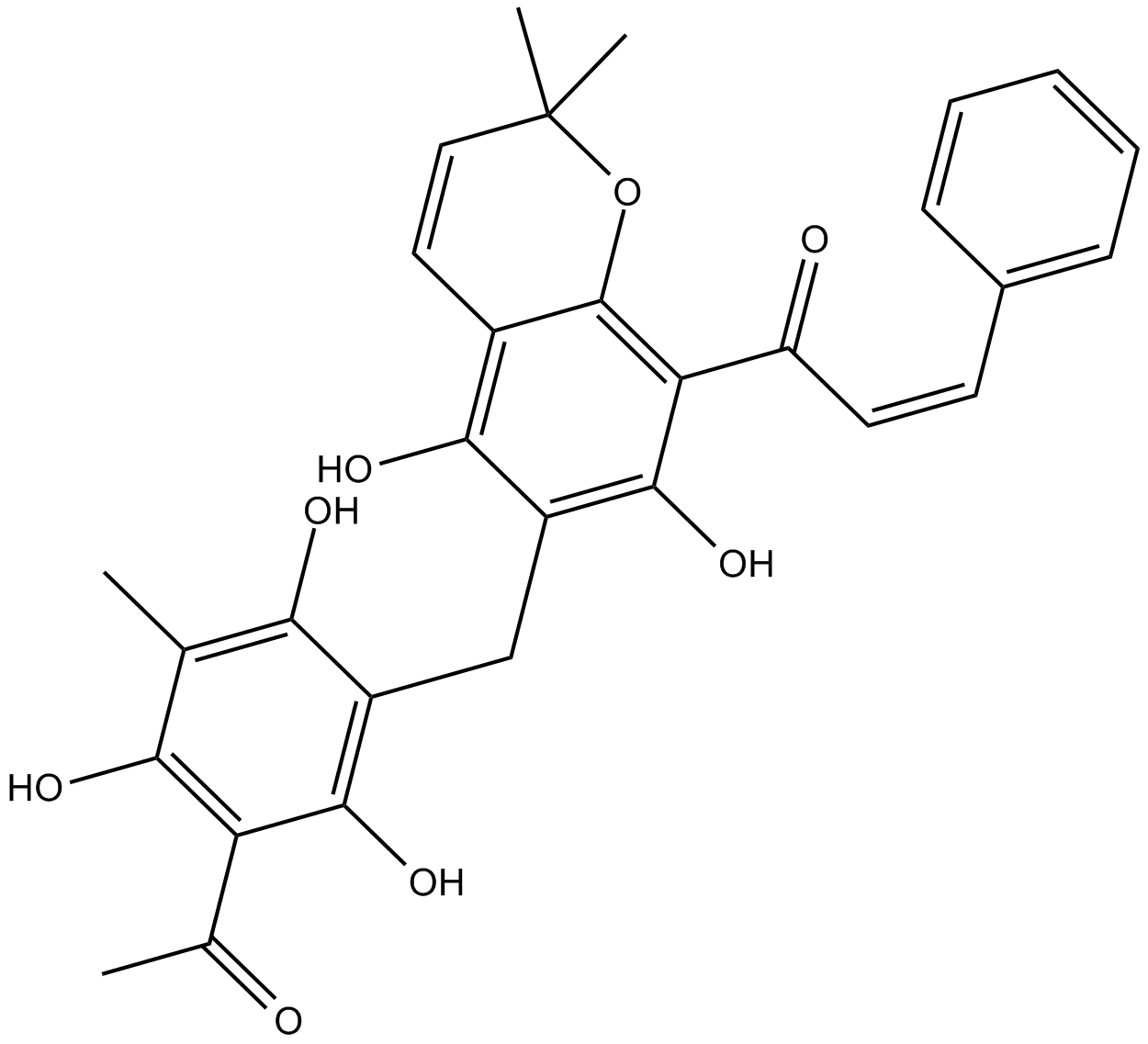 B6803 Rottlerin1 CitationTarget: PKC|Ca2 /calmodulin-dependent protein kinases (CaMKs)|PRAK|MAPKAP-K2Summary: PKC inhibitor
B6803 Rottlerin1 CitationTarget: PKC|Ca2 /calmodulin-dependent protein kinases (CaMKs)|PRAK|MAPKAP-K2Summary: PKC inhibitor -
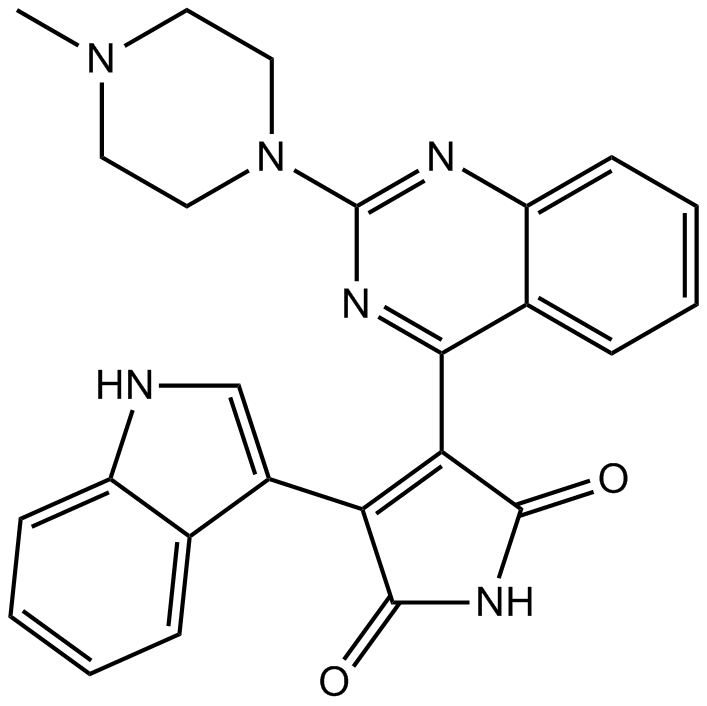 A8525 Sotrastaurin (AEB071)Target: PKCSummary: PKC inhibitor
A8525 Sotrastaurin (AEB071)Target: PKCSummary: PKC inhibitor

